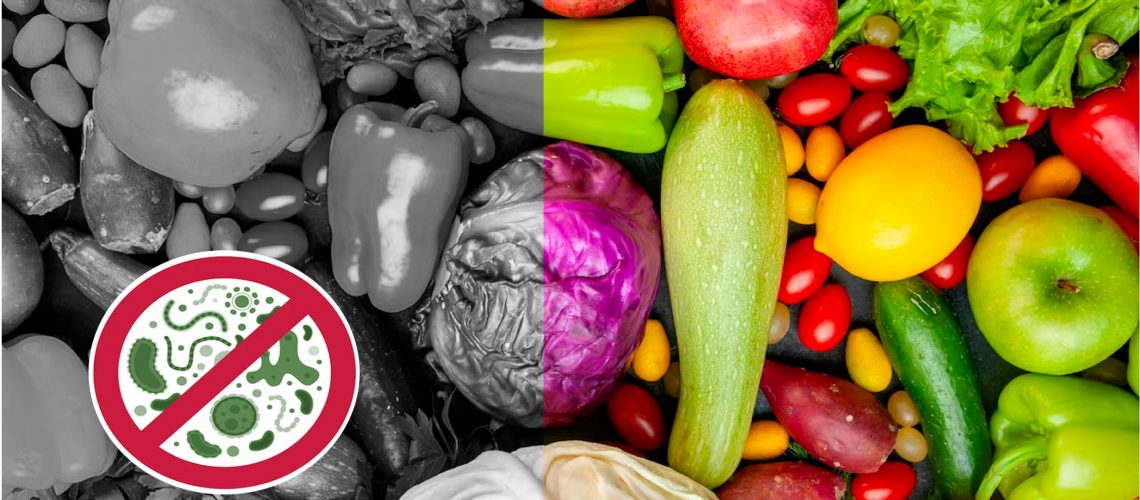The Joint FAO/WHO Expert Meetings on Microbial Risk Assessment (JEMRA) released a summary of findings last year, but now the final report is available as part of the Microbiological Risk Assessment (MRA) series. The full report of an analysis looking at reducing the risk of microbiological hazards in fresh fruits and vegetables.
In 2019, the Codex Alimentarius Commission approved the development of guidelines for the control of Shiga toxin-producing E. coli (STEC) in leafy veggies and sprouts.
To support this, JEMRA held a series of sessions on preventing and controlling microbiological hazards in fresh fruits and vegetables. A meeting in September 2021 focused on ready-to-eat and minimally processed fruits and vegetables, including leafy veggies. A later event looked at sprouts from producing seeds for sprouting to the point-of-sale.
Assessing ways to reduce risk
Scientists evaluated commodity-specific interventions used during fruit and vegetable production from primary production to post-harvest, transportation, point of sale, and consumer use. Such products are primarily eaten raw and have limited shelf-life.
Experts found preventive measures such as good agricultural practices (GAPs) and good hygiene practices (GHPs) during primary production remain the most effective means of reducing the risk of pathogens in fruit and vegetables.
Post-harvest activities require GHPs, good manufacturing practices (GMPs), and a hazard analysis and critical control point (HACCP)-based system to prevent microbial contamination, reduce cross-contamination, or avoid pathogen growth.
Highly diverse production systems are used to grow a range of leafy vegetables in geographic regions with variable environments, biodiversity, and climate. Also, crops from these systems are delivered to consumers through different market channels.
Irrigation water of poor or variable microbiological quality was called a “major risk factor” during fruit and vegetable production. The quality of process water was also of critical importance.
Several methods, such as UV, plasma, pulsed light, and ultrasound have been studied for disinfection of process water. However, there is limited evidence of use in industry.
“Lack of industry uptake of interventions indicates a need for future research to more carefully address the practicality of new technologies, and to examine their performance under conditions that either closely simulate in-field production, on-farm packing and commercial processing, or by experimentation in commercial-processing facilities,” said experts.
Vegetables, fruits and berries
Irradiation is the most effective post-harvest treatment against pathogens on vegetables but the cost and adverse consumer response continue to hinder commercial applications. Electrolyzed water with other treatments can reduce bacterial pathogens and bacteriophages also show potential but both have drawbacks, said scientists.
Berries can be produced in open fields and controlled environment agriculture (CEA), which includes indoor agriculture and vertical farming while tropical fruits grow mostly on trees or bushes. Steps such as washing are not common on berries due to the risk of damage and mold growth.
Water-assisted treatments like UV and pulsed light had potential in some situations for berries and tropical fruits. Gas-based methods such as controlled-release pads also had variable effects.
Usually pome fruits, such as apples and pears, are subjected to controlled atmosphere and cold storage to preserve the fruits for longer.
The main strategy for safety of melons and tree fruits involves hygienic handling and hygiene control including environmental monitoring during sorting and packing. Keeping the packing environment and packaging equipment free from contamination is also essential.
“While there has been a great deal of work done with these commodities, it has primarily been associated with a limited number of bacterial foodborne pathogens, leaving gaps in knowledge connected to protozoan or viral targets,” said scientists.
Our almost 40 years of experience in health and food safety at The Rosmar Group have shown us that prevention and effective diagnosis is vital to minimize food safety risks.
Reference:
Whitworth, J. (2023, septiembre 14). FAO and WHO release full report on hazards in produce. Food Safety News. https://www.foodsafetynews.com/2023/09/fao-and-who-release-full-report-on-hazards-in-produce/


